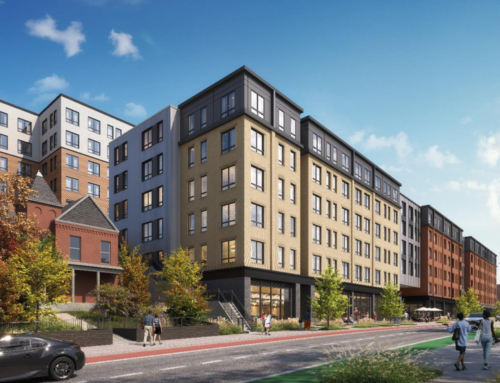LAS VEGAS—Student housing remains a regional business for companies with a national footprint. In the “Opportunities in Development” panel at RealShare Student Housing, moderator Seth Mims, president of Specialized Real Estate Group, asked developer panelists about trends in development across the country, whether we’re at risk of overdeveloping and, if so, where.
One of the key topics of the day was the rising construction costs and how developers are getting yields back up to where they used to be. “Overall, it is a challenge. The optimistic viewpoint is that it’s an example of the market working itself out,” notedBrian Dinerstein, president of the Dinerstein Cos. “There is a lot of demand. Prices are going to rise and this might curb some new construction.”
Dinerstein also expects to see rising costs to continue for the foreseeable future. “You have to have your eyes open and account for it.”
Wes Rogers, CEO of Landmark Properties, said that even with rising costs, there is still a development margin that justifies new construction. “We are still seeing deals make sense even with that challenge.” However, he said, “I could think of a few deals where it just hasn’t penciled out, but last year, it might have.” To help mitigate the issue, Landmark takes measures such as buying lumber in advance and storing it. “Things like that help control the cost a little bit.”
Rising construction costs are difficult anywhere in the country, explained Brent Little, president of Fountain Residential Partners. “We’re trying to be smarter about the way we design, so we come up with the solution the first time.”
Nearly 200 were in attendance on Thursday at RealShare Student Housing in Las Vegas.
When talking about parking, Rogers noted that his firm does it more than ever, ands he recommended using prefab decks. “Sometimes you have to adjust your site plans to accommodate a prefab deck,” in order to “get it just right for the most efficient deal because there isn’t as much wiggle room in these deals,” he said. “We are generally ready to pay a little extra to be in the right markets for us.”
When talking about steel versus sticks, Little points up that steel does cost a little more, but can represent a savings on time and the labor that’s in short supply right now.
“There are certainly benefits,” adds Jeff Larsen, principal of MVE Partners. “You pay a bit more for it,” but the speed at which steel construction comes together is “a great benefit. We have seen that really starting to grow in our area as an alternative.”
When discussing trends in development, from cottage style housing to garden to urban infill, Rogers pointed out that his firm is focused on urban at the moment. “It is hard to come by the cottage-type sites and we aren’t doing a whole lot of garden,” he said. “If we aren’t pedestrian to campus, we want to make sure that we differentiate ourselves.”
According to Little, it is really more site-specific. “We want to be approximate to campus and if we have a larger site, then we will go with garden or cottage.” Having said that, he still sees a market for some properties that are two or three miles away from campus. “You just have to be tenacious in getting the land you want.”
Dinerstein said his company looks at all the scenarios and try to approach everything with the most conservative analysis possible. “It isn’t the time to stretch and hope to get bailed out,” he said. “Right now, you really want to focus on the deals that make the most sense, and we have had good experience with the pedestrian infill product. So I don’t see us changing our strike zone.”
Rogers agrees that there is more risk in the marketplace at the moment. “With the smaller development yields, you have to keep your eyes open. We are a bit more conservative.”
When asked about the biggest opportunity in the next two years, Little says walk-to-campus locations are really in vogue and staying that course is where the opportunity lies. “Who knew that people wanted to pay twice as much to live closer to campus? Students in what we thought were sleepy old markets will open their pocketbooks to pay more for rent.”
But he did warn that “You have to do your due diligence to understand the market rents, but so far there has been a huge propensity to pay for proximity.”
Original Source: By Natalie Dolce




